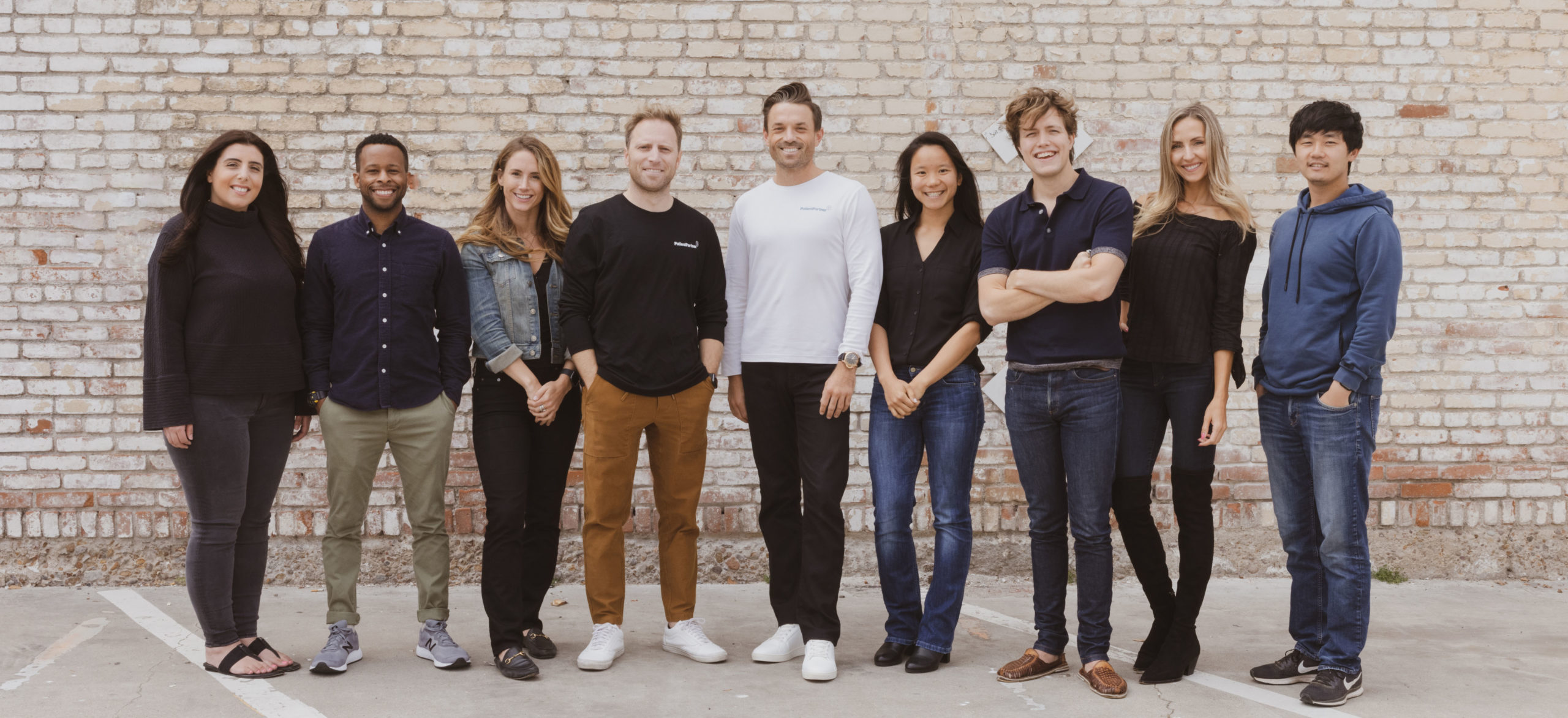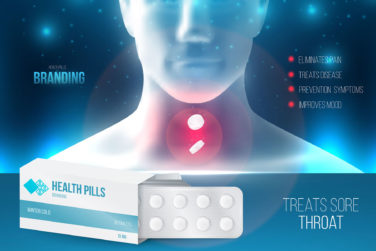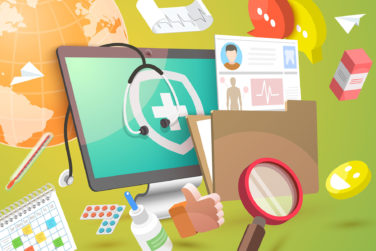When patients are about to have a surgery, they have a ton of questions roaming around in their heads. What is it going to feel like after? What is the recovery process like? How will I need to adjust my day-to-day life? What do I need to know that I wouldn’t necessarily think of? The only problem is, patients are often too afraid to ask their doctors any of these questions. And even if they did, their doctor is not always the best person to address what they most want to know.
That is why George Kramb and Patrick Frank co-founded PatientPartner, a startup that allows patients to connect with past patients who had a similar surgery and can actually speak to what the experience was like for them. Currently, the company offers patient partners in 10 different surgical disciplines with a heavy focus on weight loss and orthopedics, primarily joint replacement. But they already have plans to expand into three additional surgery lines: spine, fertility, and cosmetic.
PM360 spoke with Kramb and Frank about why they felt like PatientPartner offered a key opportunity to both patients and medical device companies, how COVID greatly reduced their funding and what they did to survive, and what is next for the company.
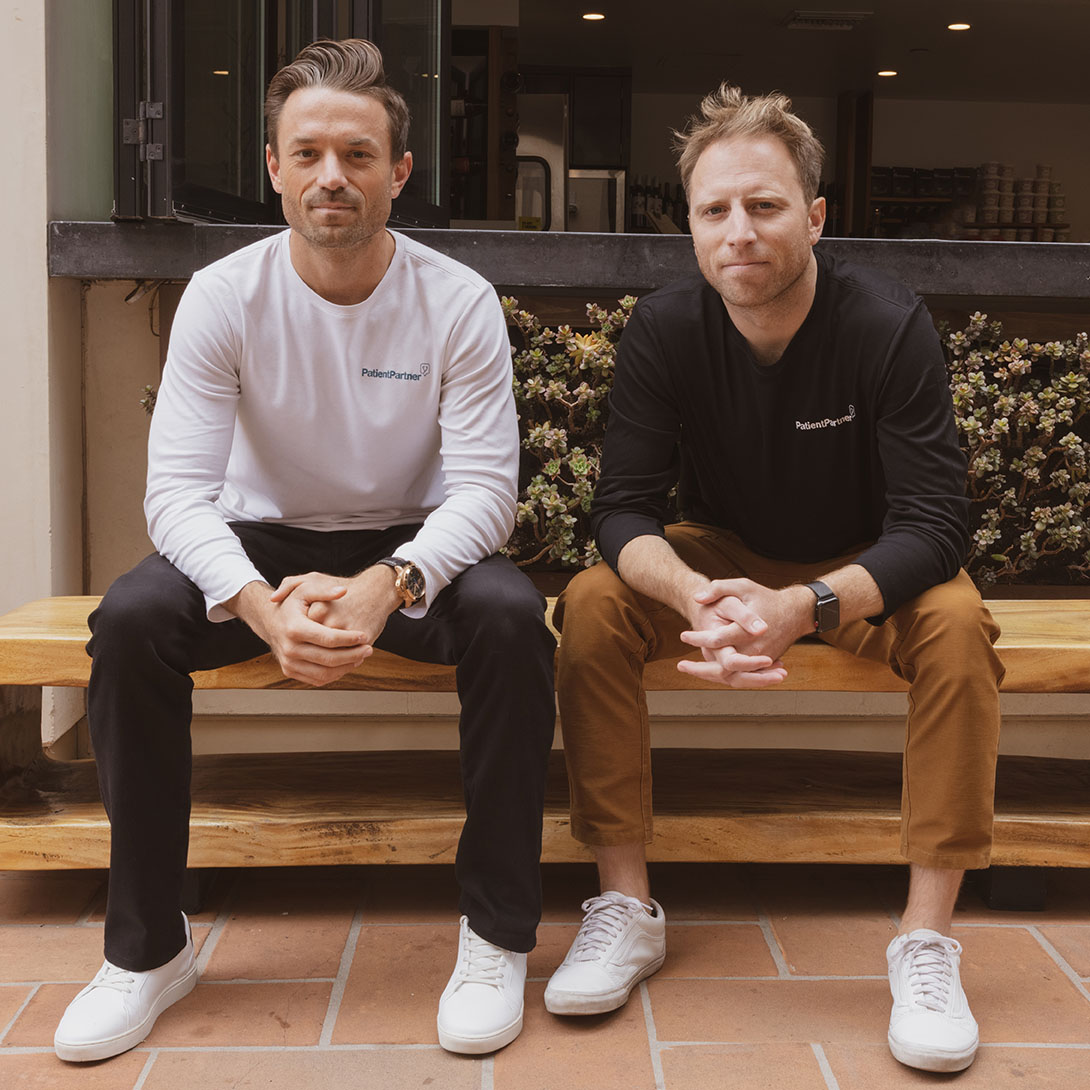
PM360: Where did the idea for this company come from?
George Kramb: I came from the medical device industry on the sales side. As a device rep, you’re basically working hand-in-hand with surgeons making sure the cases are going smoothly and that the products were being used properly. So I got to be in clinic with a lot of these doctors, and I noticed a big difference between a postoperative patient and a preoperative patient when it came to having the right questions ready to be asked.
Time and time again, I would witness when preoperative patients got in front of the doctor, they would maybe say five to 10 words total. But when you flip the script and you go into the room of a postoperative patient, they would come with these lists of questions. That got me thinking about how crucial the preoperative setting is and the opportunity that existed to help patients make sure they’re connecting to the best surgeon for them as well as a relatable network of someone who has gone through that procedure before so that they could understand what they’re about to get into.
That’s when I linked up with Patrick who I have been friends with since childhood and we always knew we wanted to start a business together. He came in and added the technology piece that I was missing.
Patrick Frank: I’ve always been focused on consumer technology and enabling consumers to make better decisions, more educated decisions, and quicker decisions. I worked primarily in legacy industries, which are oil and gas, retail, banking, real estate, law, and now with healthcare, which is the largest industry that our nation has and is by far been the slowest-moving in terms of adopting technology and bettering the entire patient experience. But we have seen with all eyes focused on healthcare at the moment due to the pandemic there is this need to push the industry forward in their adoption of technology in order to better this entire experience.
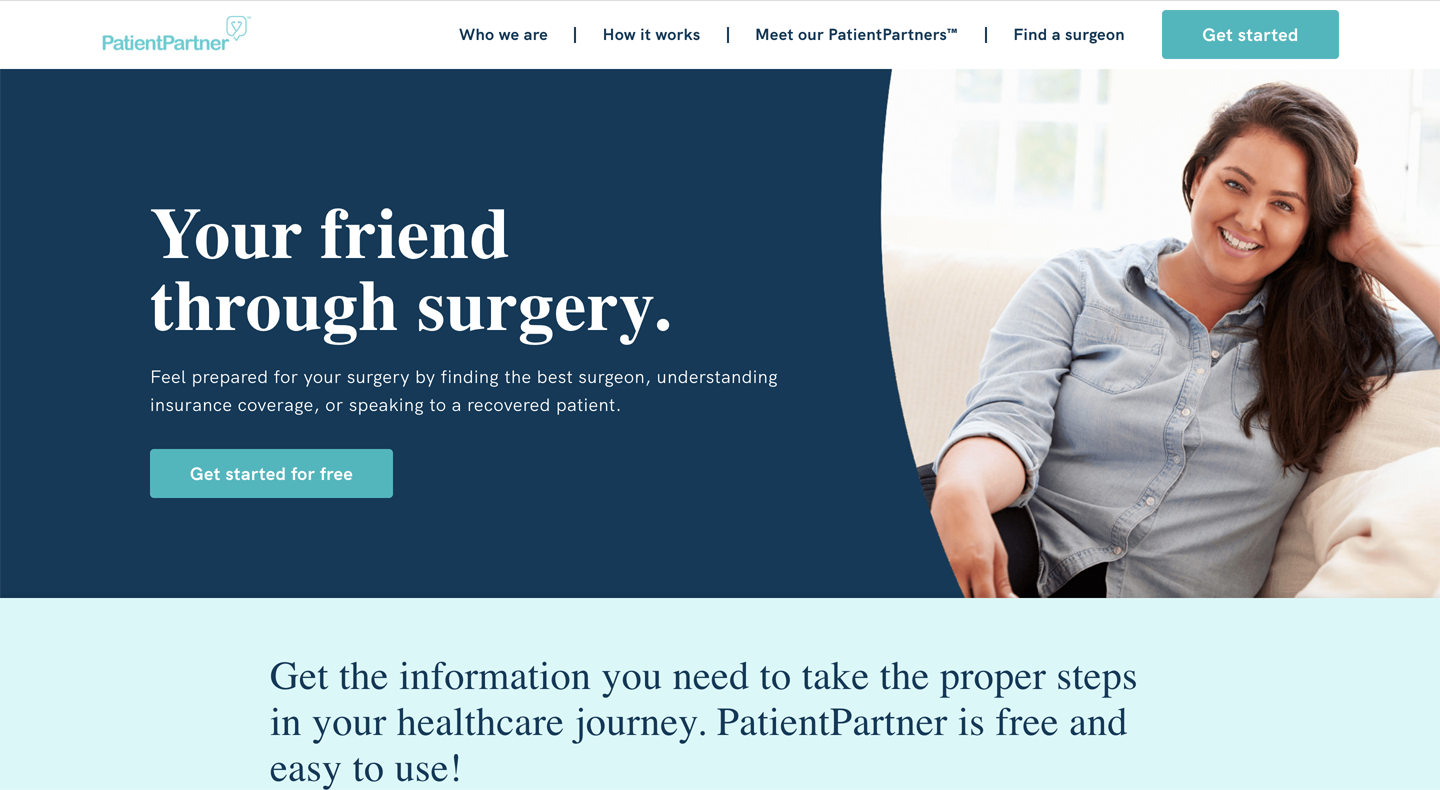 When the company first launched it was called RightDevice. What led to the change to PatientPartner?
When the company first launched it was called RightDevice. What led to the change to PatientPartner?
George Kramb: When we started this company, it was very device focused in helping patients understand the difference between one medical device over another. One of the things Pat and I realized as the company matured is that’s only one step in the preoperative journey. We wanted to be a real resource for patients throughout the entire journey, and that’s why we made that decision to rebrand and pivot the company to focus on assisting patients in all spectrums of this journey.
Patrick Frank: At the end of the day, we connect incoming patients who are preparing for or considering a surgical process with patients who have already been through the exact same surgery. We allow them to have a one-to-one conversation based on relatability. So you’re talking with someone who is very similar to yourself and also located within your community, which ultimately leads to a better consumer experience as a whole.
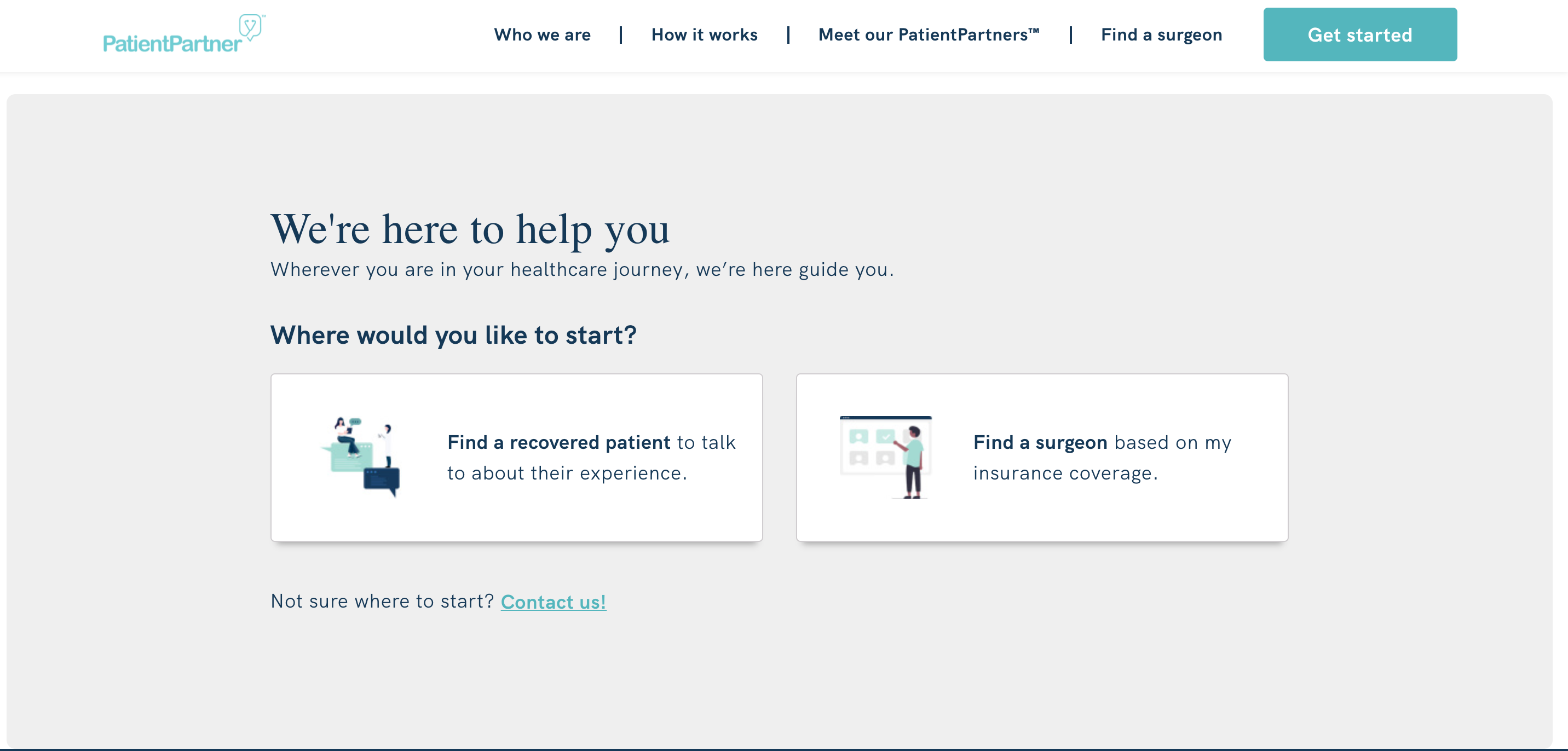 When you were getting funding for the company, you were originally slated to get $2 million and then when the pandemic hit you only ended up with $250,000. What was that process like and how did that change how you had to operate?
When you were getting funding for the company, you were originally slated to get $2 million and then when the pandemic hit you only ended up with $250,000. What was that process like and how did that change how you had to operate?
George Kramb: Honestly, I love this story just because it shows the true grit of the company at the time. We went out to raise this capital, we got a term sheet for $2 million, and we were so excited. Then in that same week COVID happened and those investors said they had to focus more on their portfolio, but they didn’t want to completely pull out of the deal so they offered us $250k. We took the money and then tried to raise more capital elsewhere.
But throughout the entire venture capital world, everybody had that similar philosophy of focusing on their current portfolio companies and making sure they could survive at this time. And so, Pat and I looked at each other and basically said, “Okay, all the money will have to go into the business. So let’s make the 250k work and build an amazing product.” Within a couple months, we were able to sign on some of the largest clients in the industry.
And when we did that—with nothing more than a couple bucks in our bank account—our investors looked at the opportunity that we were striving for and they decided to fill the entire round. So it ended up being an amazing experience as we had our backs against the ropes and we made it work. It is probably one of my proudest moments of the company.
You mentioned signing some of the top companies in the industry. What does that partnership look like from the medical device company’s perspective?
George Kramb: Going back to my previous career, one of the things I always felt like medical device companies should have is a patient arm in their business—and they really don’t. Pat and I saw the opportunity to help medical device companies to participate more in the patient side. So when we work with medical device companies, they ultimately sponsor a patient partner in the geographical area. For example, if there’s a device company in joint replacement, they can sponsor a patient so that we can have more patients in different geographical areas who are able to talk about joint replacements.
It’s one of those things where everybody wins. Patients are able to get a resource and information that can’t be found anywhere else. Hospital systems get the ability to advertise this brand-new patient experience that helps patients understand their options and go through the journey. Surgeons get to differentiate themselves in the practice by giving their new patients and their current patients an opportunity to engage with their past patients. And on top of all of that, you give medical device companies an opportunity to participate in all of this.
Are companies sponsoring brand advocates for their own products or is it just general procedure awareness?
Patrick Frank: We’re creating awareness around surgery. Our goal is to help patients become more aware that these surgeries exist and help them make that micro commitment of taking the first step of talking to somebody before even going into a surgeon’s office so they then feel more confident and motivated about their decision.
George Kramb: One thing as a company we are trying to debunk is the negative confirmation bias out there. Often, the first thing patients do is go on Google and start typing things in. Even though 95% or higher of patients end up getting a better quality of life after a certain procedure, it’s those small percentage of patients who don’t follow the protocol or have some sort of mishap who go online and write the negative blog posts or post poor reviews. That’s not necessarily a good representation of what this procedure or treatment can really give back to patients. But the patients who are happy aren’t the ones writing blog posts. They’re the ones out there enjoying their lives. We want to give prospective patients the opportunity to talk and engage with those types of patients.
Beyond the sponsorship opportunities, are there other opportunities within the company that device companies can get involved with?
George Kramb: One of the most unique aspects of what we do is when a patient partner engages a preoperative patient, we make a donation to a charity of their choice. Since we don’t pay patient partners, we wanted to participate in the same altruistic nature these patient partners provide in giving back their time by donating a part of our proceeds. But medical device companies can also participate in helping us to find good charities to donate these funds to.
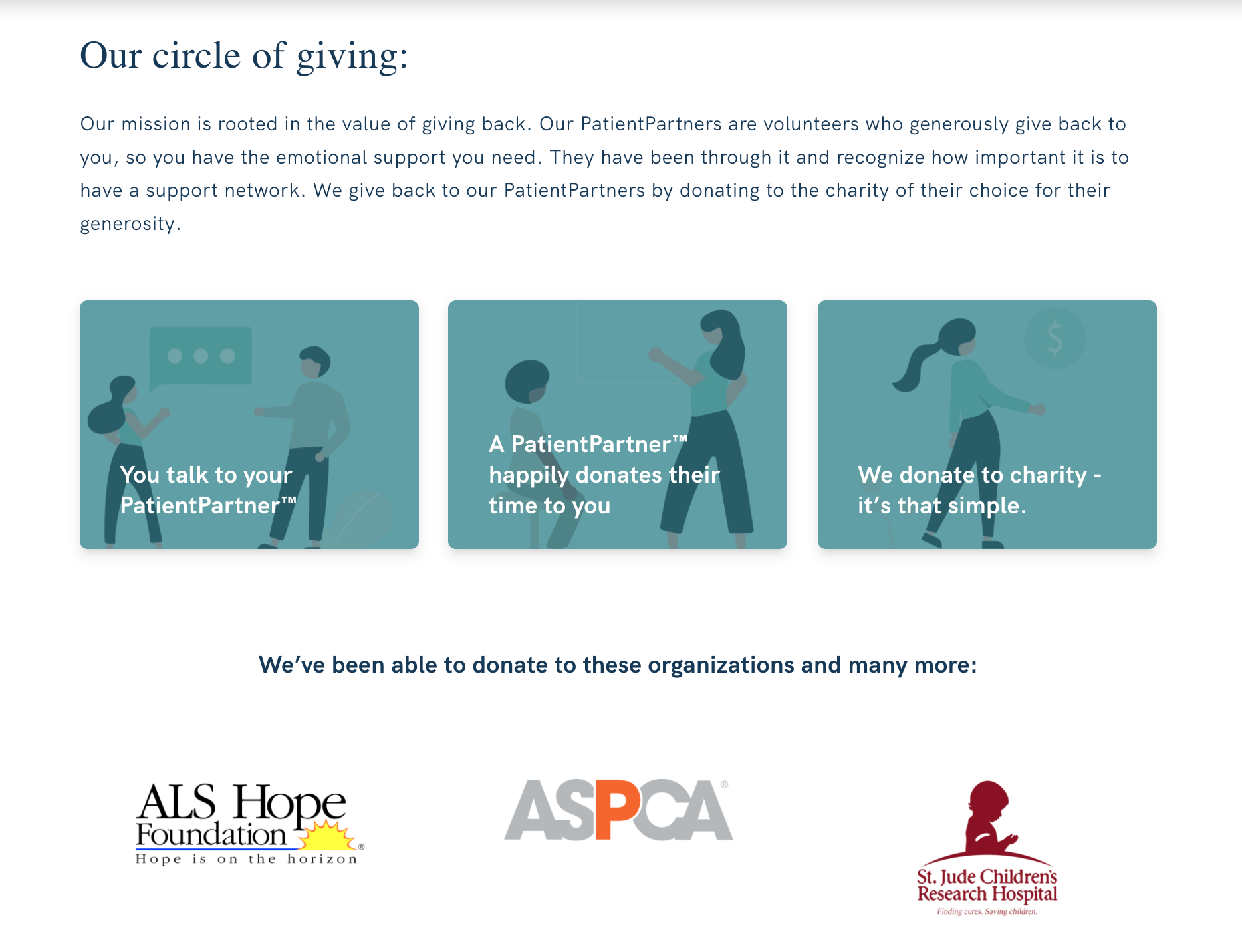 How do you find the patients who volunteer to serve as partners?
How do you find the patients who volunteer to serve as partners?
George Kramb: When we work with doctors’ offices, we ask them if they can elect five or six of their past patients or their all-star patients who are altruistic in nature. At the end of the day, these patients are going to be representatives of those physicians’ practice on our platform, so these surgeons and doctors are the ones who provide patient partners.
Not all the volunteers are patients, as I know on your site there are also doctors and medical experts listed as potential partners. What is the pairing process like when somebody signs up looking to speak with a partner?
George Kramb: We have a patent-pending algorithm rooted in patient matching built on a relatability matrix. When you come on to PatientPartner, the first thing patients do is engage with a questionnaire. This questionnaire not only helps us find the most relatable patient partner for that individual, but it also gives us the ability to learn about these patients and how we can best provide support and healthcare during that time. For example, patients may say they want help navigating insurance or finding a good and reputable surgeon in their area. We can help facilitate all of that as well.
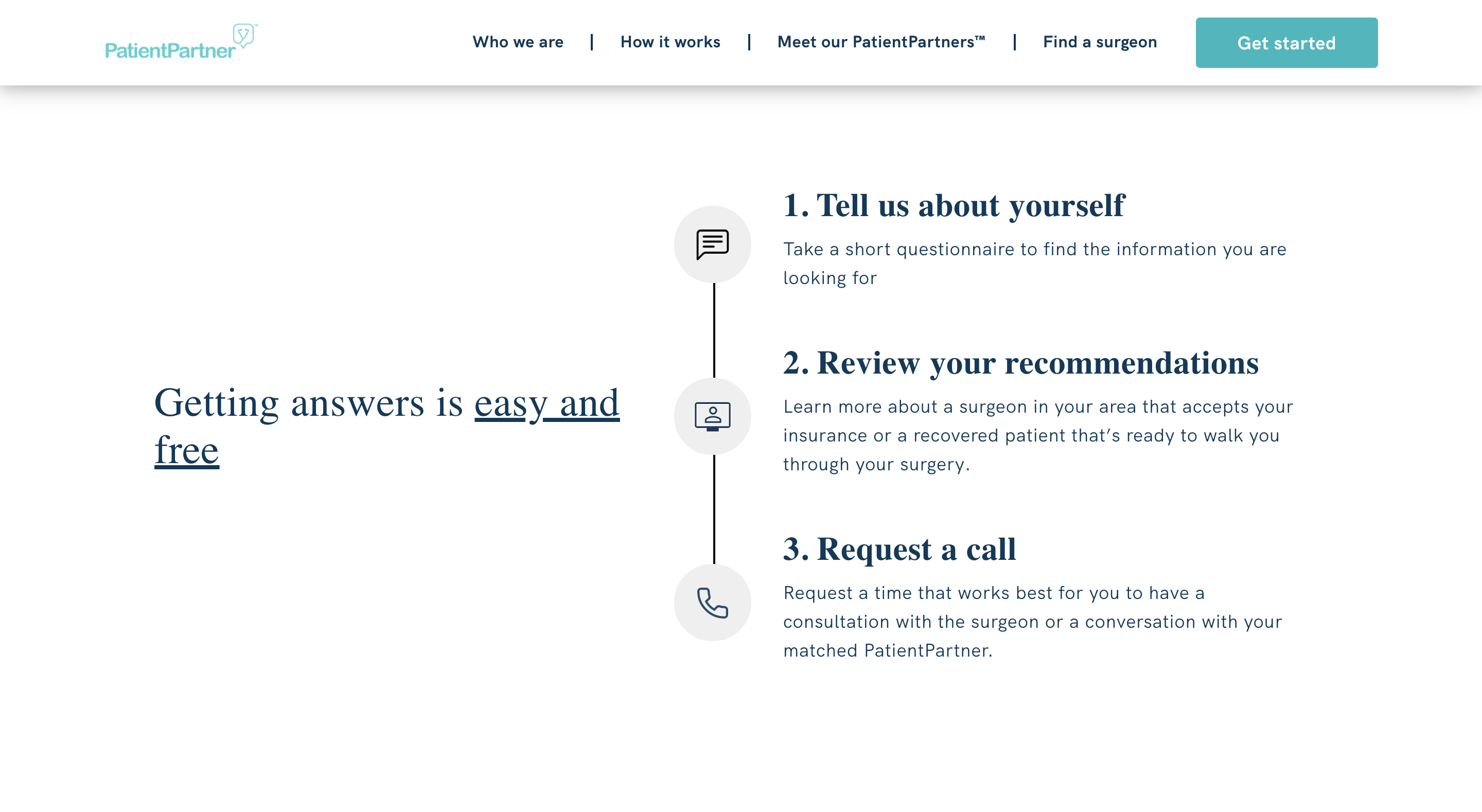 Patrick Frank: This is one of the most important decisions a person will make in their life, so we want to enable patients to be able to have the emotional side of the conversation with someone who can understand that. Surgeons and physicians are not always able to offer that as only a very small portion of these surgeons actually have the same surgery that they’re operating on, so they can’t speak to the true day-to-day experience of what that surgery is like. But by connecting patients together, we are bringing that humanized, personalized touch to people going through this process.
Patrick Frank: This is one of the most important decisions a person will make in their life, so we want to enable patients to be able to have the emotional side of the conversation with someone who can understand that. Surgeons and physicians are not always able to offer that as only a very small portion of these surgeons actually have the same surgery that they’re operating on, so they can’t speak to the true day-to-day experience of what that surgery is like. But by connecting patients together, we are bringing that humanized, personalized touch to people going through this process.
In terms of your surgeon finder feature, I noticed on your site the rating system for doctors is based more on their bedside manner or how they relate to patients. What goes into that rating and why did you decide to offer that to patients?
George Kramb: When we were building the surgeon gallery and the surgeon list, we wanted to build a very intimate profile of these doctors. You can go onto Healthgrades and find information about these doctors, but we wanted to bring information they can’t find anywhere else. So we talk to surgeons’ past patients, and we ask them what it was like going through the process with them and whether they were more direct and to the point or warm and friendly. Some patients want a doctor who is not going to beat around the bush, whereas others need someone who is emotional and comforting. And patients want to know that before picking the right doctor for them.
Since you look for patients in certain geographical regions, is your company mostly regional or do you provide services nationwide?
George Kramb: When we initially launched PatientPartner, we wanted to do it in our backyard. But in the past couple of months, we’ve started expanding and have went from just southern California to Phoenix to Dallas, and now we’re also in Vegas. We’re also exploring the idea of going up to northwest as well as New York, Chicago, and Florida. So, the goal is to expand nationwide.
Beyond that, what are your long-term goals or visions for the company?
George Kramb: We have this tagline, “Wherever there is a procedure, PatientPartner is there to guide you.” PatientPartner is incredibly applicable across so many different healthcare journeys, and we even see this branching out into the pharmaceutical side of things as well. Patients want to hear from patients, and we are seeing this time and time again. For example, we hold these webinars and we invite one of our doctors and then we invite a patient partner. And it’s funny to see how many questions an incoming patient has to the patient partner over the doctor.
Patrick Frank: As George says, patients want to talk to patients about their experience and our 10-year plan is to be the platform where those connections happen.

